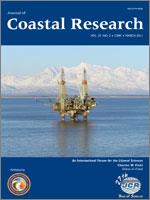A great many studies on wave breaking have been carried out, and much experimental and field data have been documented. Moreover, on the basis of various data sets, many empirical formulas based primarily on regression analysis have been proposed to quantitatively estimate wave breaking for engineering applications. However, wave breaking has an inherent variability, which suggests that a linear statistical approach such as regression analysis might be inadequate. This study presents an alternative nonlinear method using an artificial neural network (ANN), one of the soft computing methods, for predicting breaking-wave heights and water depths. Using data from laboratory experiments showing that wave breaking characteristics on a gravel beach are different from those on a sandy beach, we developed a three-layered feed-forward type of network to obtain the output of wave-breaking heights and water depths using deepwater heights, wave periods, and seabed conditions as inputs. In particular, the effects of the groundwater table on wave breaking on a gravel beach were considered. We then aggregated the laboratory data to train the ANN to predict the wave breaker index. The results predicted by fully-trained ANNs are more accurate than those obtained by existing empirical formulas, and they identified factors crucial for predicting wave breaking. These results show that ANNs are useful tools for both the prediction and mechanistic analysis of wave breaking.
BioOne.org will be down briefly for maintenance on 17 December 2024 between 18:00-22:00 Pacific Time US. We apologize for any inconvenience.
How to translate text using browser tools
1 March 2011
Prediction of Wave Breaking on a Gravel Beach by an Artificial Neural Network
Kwang-Ho Lee,
Norimi Mizutani,
Toshiaki Fujii
ACCESS THE FULL ARTICLE

Journal of Coastal Research
Vol. 27 • No. 2
March 2011
Vol. 27 • No. 2
March 2011
artificial neural network
gravel beach
Groundwater table
sandy beach
wave breaking water depth
wave-breaking height




